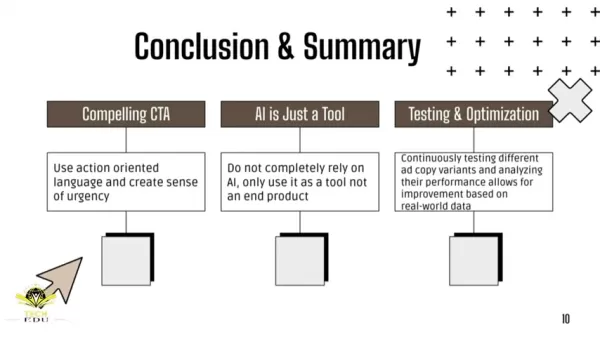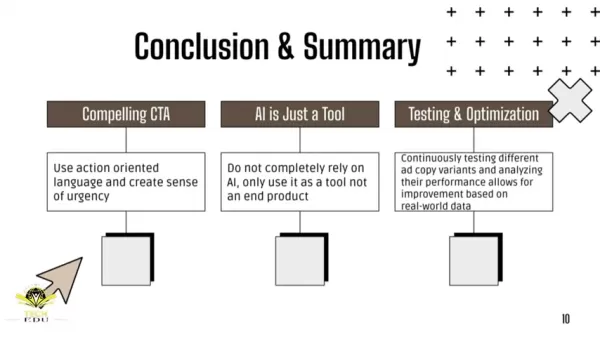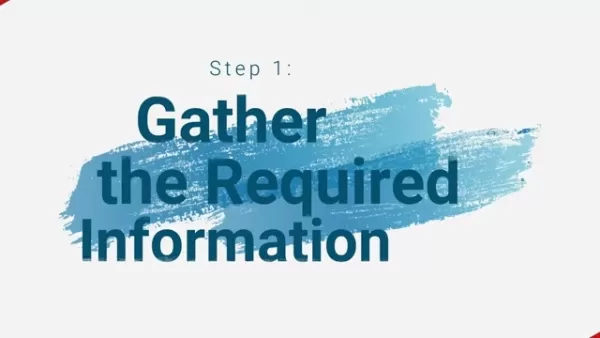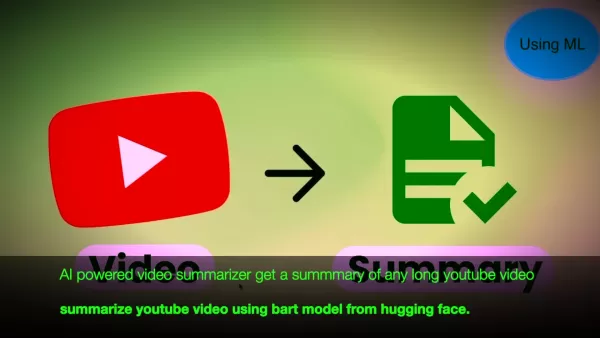AI in Copywriting: Conclusion and Tips to Elevate Your Skills
As we wrap up our journey through the world of AI in copywriting, it's crucial to gather the insights and techniques we've learned. This article aims to distill the essence of what we've covered, providing you with a concise summary of the key concepts, practical tips, and strategic advice on how to harness AI to elevate your copywriting game. Whether you're looking to scale your social media marketing agency or kickstart your freelance copywriting career, understanding how AI can enhance your efforts is vital. Let's dive in and see how we can make the most of this powerful tool.
Key Points
- Crafting compelling CTAs with action-oriented language and urgency is essential for driving action.
- AI should be viewed as a tool to assist, not a complete solution; maintain a balance to preserve creativity.
- Continuous testing and optimization of your ad copy is critical to enhancing performance.
- Incorporating scarcity and urgency into your ad copy can significantly boost conversion rates.
- Human oversight is still necessary to ensure the quality and relevance of AI-generated content.
Key Takeaways from AI Copywriting
Compelling Call to Actions (CTAs)
Let's face it, a compelling call to action, or CTA, is the heartbeat of effective marketing. It's what nudges your audience to take that crucial next step, be it making a purchase or signing up for a course. To craft CTAs that truly resonate, you need to use action-oriented language that's direct and to the point. This clarity helps your audience know exactly what they need to do. Adding a sense of urgency? That's like putting a turbo boost on your CTA, encouraging immediate action rather than procrastination. It's all about driving engagement and boosting conversions.
Some examples of action-oriented language to get you started:
- Buy now
- Purchase now
- Shop now
- Click this link
- Press this button

AI: Just a Tool
It's easy to get caught up in the allure of AI, but remember, it's just a tool. Think of it as a helpful assistant, not the final product. AI can streamline your creative process and offer fresh perspectives, but it can't replace the unique flair of human creativity. Always bring your own ideas to the table and use AI as a means to enhance, not replace, your work. And don't forget to double-check AI outputs for relevance and effectiveness.

Testing and Optimization
The marketing world is ever-changing, with algorithms and AI models constantly evolving. This means you need to be on your toes, continuously testing and optimizing your ad copy. By experimenting with different variations and analyzing real-world performance data, you can make informed decisions that genuinely improve your marketing outcomes. It's all about staying agile and data-driven.
Two Major Things to Consider in Copywriting
Importance of Action in CTAs
No matter how stellar your copy is or how intriguing your product might be, if you don't clearly spell out your CTA, your audience might be left scratching their heads. Without a direct call to action, potential customers might not take the necessary steps to engage or make a purchase. It's like pointing them to the finish line.

Leveraging Scarcity and Urgency
Imagine running two ad campaigns: one offering a 50% discount "forever," and the other stating the same discount "ends tomorrow." Which one would you act on faster? Exactly. By highlighting the scarcity and urgency of an offer, you encourage your audience to act quickly, significantly improving your conversion rates. It's about creating a sense of "now or never."

How to Improve Your Copywriting with These Summarized Techniques
Crafting Action-Oriented CTAs
- Use Strong Verbs: Kick off your CTAs with verbs that leave no room for ambiguity, like "Shop Now," "Sign Up Today," or "Download Free."
- Create a Sense of Urgency: Employ phrases that suggest limited time or scarcity, such as "Limited Time Offer," "While Supplies Last," or "Ends Tomorrow," to spur immediate action.
- Keep it Concise: Brevity is your friend here. Short, clear CTAs tend to work better.
- Make it Prominent: Make sure your CTA pops visually, using contrasting colors or strategic placement to catch the eye.
- Personalize: Tailor your CTAs to the user's context, perhaps with "Explore Your Options" or "Start My Free Trial."
- Test and Iterate: Keep experimenting with different CTAs to find what resonates best with your audience.
- Examples: Swap "Learn More" for "Discover How," or "Get Started" for "Start Your Journey Today."
Optimizing AI Integration
- Use AI for Idea Generation: Let AI help you brainstorm ad copy ideas, headlines, and new angles.
- Refine AI-Generated Content: Always give AI outputs a human touch by reviewing and editing them to match your brand's voice and ensure accuracy.
- Check for Uniqueness: Verify that AI content is original and doesn't tread on anyone's copyright.
- Balance AI with Human Input: Use AI to complement, not overshadow, your copywriting skills.
- Filter AI Ideas: Use your judgment to sift through AI suggestions, selecting only what aligns with your goals.
Effective Testing and Optimization
- A/B Testing: Pit different versions of your ad copy against each other to see which one comes out on top.
- Analyze Performance Metrics: Keep an eye on click-through rates (CTR), conversion rates, and other key metrics to gauge effectiveness.
- Segment Your Audience: Tailor your ad copy to different audience segments to boost relevance and engagement.
- Iterate Based on Data: Use performance data to refine your ad copy, CTAs, and targeting strategies.
- Keep Testing Different Variations: Continuously mix things up to keep your ad copy fresh and effective.
- Example: If a particular CTA yields a higher CTR, consider rolling it out across more of your campaigns.
Advantages and Disadvantages of Using AI in Copywriting
Pros
- Efficiency: AI can churn out content at a brisk pace.
- Cost-Effective: It reduces the need for extensive human resources.
- Idea Generation: AI can help spark new ideas and angles.
- Data-Driven: It can analyze performance data to fine-tune your copy.
- 24/7 Availability: AI tools are always ready to assist with content creation.
Cons
- Lack of Creativity: AI content might lack the originality and emotional depth of human writing.
- Ethical Concerns: There's a risk of plagiarism and copyright issues.
- Inaccuracy: AI can sometimes generate incorrect or misleading information.
- Brand Misalignment: AI-generated content may not always fit your brand's tone and values.
- Over-Reliance: Leaning too heavily on AI can stifle human creativity and strategic thinking.
Frequently Asked Questions
Why is a compelling CTA so important in ad copywriting?
A compelling CTA is the linchpin of ad copywriting because it prompts your audience to take the desired action, be it a purchase, a sign-up, or a visit to your website. Without a strong CTA, you risk leaving your potential customers in limbo, unsure of what to do next.
How should I use AI in my copywriting process?
Use AI as a tool for generating ideas and creating initial drafts. But remember, it's crucial to have human oversight to ensure the content aligns with your brand's voice, remains original, and is factually accurate. AI can be a great starting point, but it's the human touch that makes the difference.
Why is continuous testing and optimization important?
The digital landscape is in constant flux, with algorithms and trends shifting all the time. To stay ahead, you need to keep testing and optimizing your ad copy. By analyzing performance data, you can adapt and refine your strategies to keep your campaigns sharp and effective.
Related Questions on AI Copywriting
What skills should copywriters focus on developing in the age of AI?
In the age of AI, copywriters should hone their critical thinking, creativity, and strategic skills. While AI can handle routine tasks, human insight is crucial for crafting innovative ideas, understanding nuanced contexts, and ensuring content aligns with ethical standards and brand identity. Communication skills and the ability to interpret data are also key.
How can I create a sense of urgency in my ad copy?
To instill urgency, use time-sensitive language like "Limited Time Offer," "Ends Today," or "While Supplies Last." Highlight scarcity by noting limited availability or exclusive access. Countdown timers and personalized reminders can further amplify the urgency, encouraging immediate action. But remember, the offer itself needs to be compelling for this to work.
What metrics should I monitor to assess the performance of my ad copy?
To evaluate your ad copy's performance, keep tabs on click-through rates (CTR), conversion rates, bounce rates, and cost per acquisition (CPA). Also, consider engagement metrics such as time on page, social shares, and comments. Regularly analyzing these metrics will help you understand what resonates with your audience and guide your future optimizations.
Related article
 AI-Powered Cover Letters: Expert Guide for Journal Submissions
In today's competitive academic publishing environment, crafting an effective cover letter can make the crucial difference in your manuscript's acceptance. Discover how AI-powered tools like ChatGPT can streamline this essential task, helping you cre
AI-Powered Cover Letters: Expert Guide for Journal Submissions
In today's competitive academic publishing environment, crafting an effective cover letter can make the crucial difference in your manuscript's acceptance. Discover how AI-powered tools like ChatGPT can streamline this essential task, helping you cre
 US to Sanction Foreign Officials Over Social Media Regulations
US Takes Stand Against Global Digital Content Regulations
The State Department issued a sharp diplomatic rebuke this week targeting European digital governance policies, signaling escalating tensions over control of online platforms. Secretary Marco
US to Sanction Foreign Officials Over Social Media Regulations
US Takes Stand Against Global Digital Content Regulations
The State Department issued a sharp diplomatic rebuke this week targeting European digital governance policies, signaling escalating tensions over control of online platforms. Secretary Marco
 Ultimate Guide to AI-Powered YouTube Video Summarizers
In our information-rich digital landscape, AI-powered YouTube video summarizers have become indispensable for efficient content consumption. This in-depth guide explores how to build a sophisticated summarization tool using cutting-edge NLP technolog
Comments (3)
0/200
Ultimate Guide to AI-Powered YouTube Video Summarizers
In our information-rich digital landscape, AI-powered YouTube video summarizers have become indispensable for efficient content consumption. This in-depth guide explores how to build a sophisticated summarization tool using cutting-edge NLP technolog
Comments (3)
0/200
![BrianMartinez]() BrianMartinez
BrianMartinez
 September 5, 2025 at 4:30:36 AM EDT
September 5, 2025 at 4:30:36 AM EDT
¡Muy buen resumen! Al final, la IA es solo una herramienta y depende de nosotros usarla con creatividad. Me quedo con el consejo de seguir practicando el copywriting 'manual' para no perder esa chispa humana ✍️


 0
0
![WillieJohnson]() WillieJohnson
WillieJohnson
 July 29, 2025 at 8:25:16 AM EDT
July 29, 2025 at 8:25:16 AM EDT
This article really opened my eyes to how AI can supercharge copywriting! The tips are practical, but I wonder if over-relying on AI might make my writing feel less human. Still, I’m excited to try these techniques! 😄


 0
0
![TimothyHill]() TimothyHill
TimothyHill
 July 28, 2025 at 4:23:07 AM EDT
July 28, 2025 at 4:23:07 AM EDT
This article really opened my eyes to how AI can supercharge copywriting! I’m curious though, how do you balance AI’s efficiency with keeping that human spark in your words? 🤔


 0
0
As we wrap up our journey through the world of AI in copywriting, it's crucial to gather the insights and techniques we've learned. This article aims to distill the essence of what we've covered, providing you with a concise summary of the key concepts, practical tips, and strategic advice on how to harness AI to elevate your copywriting game. Whether you're looking to scale your social media marketing agency or kickstart your freelance copywriting career, understanding how AI can enhance your efforts is vital. Let's dive in and see how we can make the most of this powerful tool.
Key Points
- Crafting compelling CTAs with action-oriented language and urgency is essential for driving action.
- AI should be viewed as a tool to assist, not a complete solution; maintain a balance to preserve creativity.
- Continuous testing and optimization of your ad copy is critical to enhancing performance.
- Incorporating scarcity and urgency into your ad copy can significantly boost conversion rates.
- Human oversight is still necessary to ensure the quality and relevance of AI-generated content.
Key Takeaways from AI Copywriting
Compelling Call to Actions (CTAs)
Let's face it, a compelling call to action, or CTA, is the heartbeat of effective marketing. It's what nudges your audience to take that crucial next step, be it making a purchase or signing up for a course. To craft CTAs that truly resonate, you need to use action-oriented language that's direct and to the point. This clarity helps your audience know exactly what they need to do. Adding a sense of urgency? That's like putting a turbo boost on your CTA, encouraging immediate action rather than procrastination. It's all about driving engagement and boosting conversions.
Some examples of action-oriented language to get you started:
- Buy now
- Purchase now
- Shop now
- Click this link
- Press this button

AI: Just a Tool
It's easy to get caught up in the allure of AI, but remember, it's just a tool. Think of it as a helpful assistant, not the final product. AI can streamline your creative process and offer fresh perspectives, but it can't replace the unique flair of human creativity. Always bring your own ideas to the table and use AI as a means to enhance, not replace, your work. And don't forget to double-check AI outputs for relevance and effectiveness.

Testing and Optimization
The marketing world is ever-changing, with algorithms and AI models constantly evolving. This means you need to be on your toes, continuously testing and optimizing your ad copy. By experimenting with different variations and analyzing real-world performance data, you can make informed decisions that genuinely improve your marketing outcomes. It's all about staying agile and data-driven.
Two Major Things to Consider in Copywriting
Importance of Action in CTAs
No matter how stellar your copy is or how intriguing your product might be, if you don't clearly spell out your CTA, your audience might be left scratching their heads. Without a direct call to action, potential customers might not take the necessary steps to engage or make a purchase. It's like pointing them to the finish line.

Leveraging Scarcity and Urgency
Imagine running two ad campaigns: one offering a 50% discount "forever," and the other stating the same discount "ends tomorrow." Which one would you act on faster? Exactly. By highlighting the scarcity and urgency of an offer, you encourage your audience to act quickly, significantly improving your conversion rates. It's about creating a sense of "now or never."

How to Improve Your Copywriting with These Summarized Techniques
Crafting Action-Oriented CTAs
- Use Strong Verbs: Kick off your CTAs with verbs that leave no room for ambiguity, like "Shop Now," "Sign Up Today," or "Download Free."
- Create a Sense of Urgency: Employ phrases that suggest limited time or scarcity, such as "Limited Time Offer," "While Supplies Last," or "Ends Tomorrow," to spur immediate action.
- Keep it Concise: Brevity is your friend here. Short, clear CTAs tend to work better.
- Make it Prominent: Make sure your CTA pops visually, using contrasting colors or strategic placement to catch the eye.
- Personalize: Tailor your CTAs to the user's context, perhaps with "Explore Your Options" or "Start My Free Trial."
- Test and Iterate: Keep experimenting with different CTAs to find what resonates best with your audience.
- Examples: Swap "Learn More" for "Discover How," or "Get Started" for "Start Your Journey Today."
Optimizing AI Integration
- Use AI for Idea Generation: Let AI help you brainstorm ad copy ideas, headlines, and new angles.
- Refine AI-Generated Content: Always give AI outputs a human touch by reviewing and editing them to match your brand's voice and ensure accuracy.
- Check for Uniqueness: Verify that AI content is original and doesn't tread on anyone's copyright.
- Balance AI with Human Input: Use AI to complement, not overshadow, your copywriting skills.
- Filter AI Ideas: Use your judgment to sift through AI suggestions, selecting only what aligns with your goals.
Effective Testing and Optimization
- A/B Testing: Pit different versions of your ad copy against each other to see which one comes out on top.
- Analyze Performance Metrics: Keep an eye on click-through rates (CTR), conversion rates, and other key metrics to gauge effectiveness.
- Segment Your Audience: Tailor your ad copy to different audience segments to boost relevance and engagement.
- Iterate Based on Data: Use performance data to refine your ad copy, CTAs, and targeting strategies.
- Keep Testing Different Variations: Continuously mix things up to keep your ad copy fresh and effective.
- Example: If a particular CTA yields a higher CTR, consider rolling it out across more of your campaigns.
Advantages and Disadvantages of Using AI in Copywriting
Pros
- Efficiency: AI can churn out content at a brisk pace.
- Cost-Effective: It reduces the need for extensive human resources.
- Idea Generation: AI can help spark new ideas and angles.
- Data-Driven: It can analyze performance data to fine-tune your copy.
- 24/7 Availability: AI tools are always ready to assist with content creation.
Cons
- Lack of Creativity: AI content might lack the originality and emotional depth of human writing.
- Ethical Concerns: There's a risk of plagiarism and copyright issues.
- Inaccuracy: AI can sometimes generate incorrect or misleading information.
- Brand Misalignment: AI-generated content may not always fit your brand's tone and values.
- Over-Reliance: Leaning too heavily on AI can stifle human creativity and strategic thinking.
Frequently Asked Questions
Why is a compelling CTA so important in ad copywriting?
A compelling CTA is the linchpin of ad copywriting because it prompts your audience to take the desired action, be it a purchase, a sign-up, or a visit to your website. Without a strong CTA, you risk leaving your potential customers in limbo, unsure of what to do next.
How should I use AI in my copywriting process?
Use AI as a tool for generating ideas and creating initial drafts. But remember, it's crucial to have human oversight to ensure the content aligns with your brand's voice, remains original, and is factually accurate. AI can be a great starting point, but it's the human touch that makes the difference.
Why is continuous testing and optimization important?
The digital landscape is in constant flux, with algorithms and trends shifting all the time. To stay ahead, you need to keep testing and optimizing your ad copy. By analyzing performance data, you can adapt and refine your strategies to keep your campaigns sharp and effective.
Related Questions on AI Copywriting
What skills should copywriters focus on developing in the age of AI?
In the age of AI, copywriters should hone their critical thinking, creativity, and strategic skills. While AI can handle routine tasks, human insight is crucial for crafting innovative ideas, understanding nuanced contexts, and ensuring content aligns with ethical standards and brand identity. Communication skills and the ability to interpret data are also key.
How can I create a sense of urgency in my ad copy?
To instill urgency, use time-sensitive language like "Limited Time Offer," "Ends Today," or "While Supplies Last." Highlight scarcity by noting limited availability or exclusive access. Countdown timers and personalized reminders can further amplify the urgency, encouraging immediate action. But remember, the offer itself needs to be compelling for this to work.
What metrics should I monitor to assess the performance of my ad copy?
To evaluate your ad copy's performance, keep tabs on click-through rates (CTR), conversion rates, bounce rates, and cost per acquisition (CPA). Also, consider engagement metrics such as time on page, social shares, and comments. Regularly analyzing these metrics will help you understand what resonates with your audience and guide your future optimizations.
 AI-Powered Cover Letters: Expert Guide for Journal Submissions
In today's competitive academic publishing environment, crafting an effective cover letter can make the crucial difference in your manuscript's acceptance. Discover how AI-powered tools like ChatGPT can streamline this essential task, helping you cre
AI-Powered Cover Letters: Expert Guide for Journal Submissions
In today's competitive academic publishing environment, crafting an effective cover letter can make the crucial difference in your manuscript's acceptance. Discover how AI-powered tools like ChatGPT can streamline this essential task, helping you cre
 US to Sanction Foreign Officials Over Social Media Regulations
US Takes Stand Against Global Digital Content Regulations
The State Department issued a sharp diplomatic rebuke this week targeting European digital governance policies, signaling escalating tensions over control of online platforms. Secretary Marco
US to Sanction Foreign Officials Over Social Media Regulations
US Takes Stand Against Global Digital Content Regulations
The State Department issued a sharp diplomatic rebuke this week targeting European digital governance policies, signaling escalating tensions over control of online platforms. Secretary Marco
 Ultimate Guide to AI-Powered YouTube Video Summarizers
In our information-rich digital landscape, AI-powered YouTube video summarizers have become indispensable for efficient content consumption. This in-depth guide explores how to build a sophisticated summarization tool using cutting-edge NLP technolog
Ultimate Guide to AI-Powered YouTube Video Summarizers
In our information-rich digital landscape, AI-powered YouTube video summarizers have become indispensable for efficient content consumption. This in-depth guide explores how to build a sophisticated summarization tool using cutting-edge NLP technolog
 September 5, 2025 at 4:30:36 AM EDT
September 5, 2025 at 4:30:36 AM EDT
¡Muy buen resumen! Al final, la IA es solo una herramienta y depende de nosotros usarla con creatividad. Me quedo con el consejo de seguir practicando el copywriting 'manual' para no perder esa chispa humana ✍️


 0
0
 July 29, 2025 at 8:25:16 AM EDT
July 29, 2025 at 8:25:16 AM EDT
This article really opened my eyes to how AI can supercharge copywriting! The tips are practical, but I wonder if over-relying on AI might make my writing feel less human. Still, I’m excited to try these techniques! 😄


 0
0
 July 28, 2025 at 4:23:07 AM EDT
July 28, 2025 at 4:23:07 AM EDT
This article really opened my eyes to how AI can supercharge copywriting! I’m curious though, how do you balance AI’s efficiency with keeping that human spark in your words? 🤔


 0
0





























